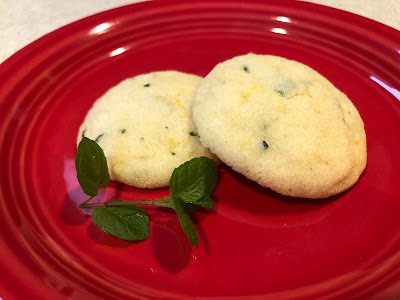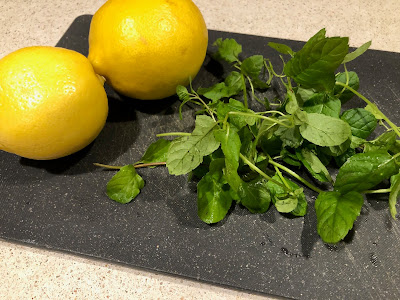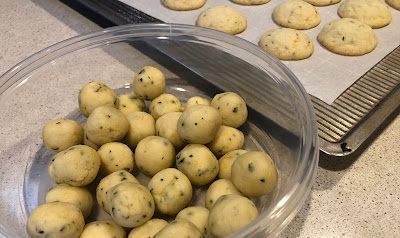
Recipe: Other herbs also work in this delicate treat

These little tea cookies are enhanced with lemon and mint. (Photos: Kathy Morrison)
|
Lemon says "winter" to me as much as cinnamon and ginger do. It must be because Californians' lemon trees -- the Meyers, Eurekas and other varieties -- this time of year are full of beautiful yellow fruit, contrasting so nicely with the shiny green leaves.
Lemon also is a wonderful partner with fresh herbs. When I went looking for a lemon cookie recipe, I found quite a few that incorporated thyme and some that had rosemary, but the one that caught my attention included fresh mint. Alternative herbs mentioned included lemon balm -- which is also part of the mint family -- and lemon verbena. That recipe I had to try. (It's at landolakes.com, if you want to see the original.)
I doubled the amount of lemon zest and fresh mint listed, and reduced the sugar. (I also used tart lemons, not the mellower Meyers.) The resulting cookie is small, delicate and still pretty sweet -- an ideal cookie to accompany a cup of afternoon tea. The mint is subtle. Next time I'm going to try the recipe with fresh lemon verbena. To really up the lemon factor, I might use a bit of lemon extract instead of the vanilla.

Meanwhile, I have half of this first batch already rolled and frozen, reserved for another grey winter day.
Lemon minted sugar cookies
Makes about 50 two-inch cookies

I baked two dozen cookies and froze the rest of the batch
for another day.
|
Comments
0 comments have been posted.Sacramento Digs Gardening to your inbox.
Sites We Like
Garden Checklist for week of July 21
Your garden needs you!
* Keep your vegetable garden watered, mulched and weeded. Water before 8 a.m. to reduce the chance of fungal infection and to conserve moisture.
* Feed vegetable plants bone meal, rock phosphate or other fertilizers high in phosphate to stimulate more blooms and fruiting. (But wait until daily high temperatures drop out of the 100s.)
* Don’t let tomatoes wilt or dry out completely. Give tomatoes a deep watering two to three times a week.
* Harvest vegetables promptly to encourage plants to produce more. Squash especially tends to grow rapidly in hot weather. Keep an eye on zucchini.
* Pinch back chrysanthemums for bushy plants and more flowers in September.
* Remove spent flowers from roses, daylilies and other bloomers as they finish flowering.
* Pinch off blooms from basil so the plant will grow more leaves.
* Cut back lavender after flowering to promote a second bloom.
* It's not too late to add a splash of color. Plant petunias, snapdragons, zinnias and marigolds.
* From seed, plant corn, pumpkins, radishes, winter squash and sunflowers.